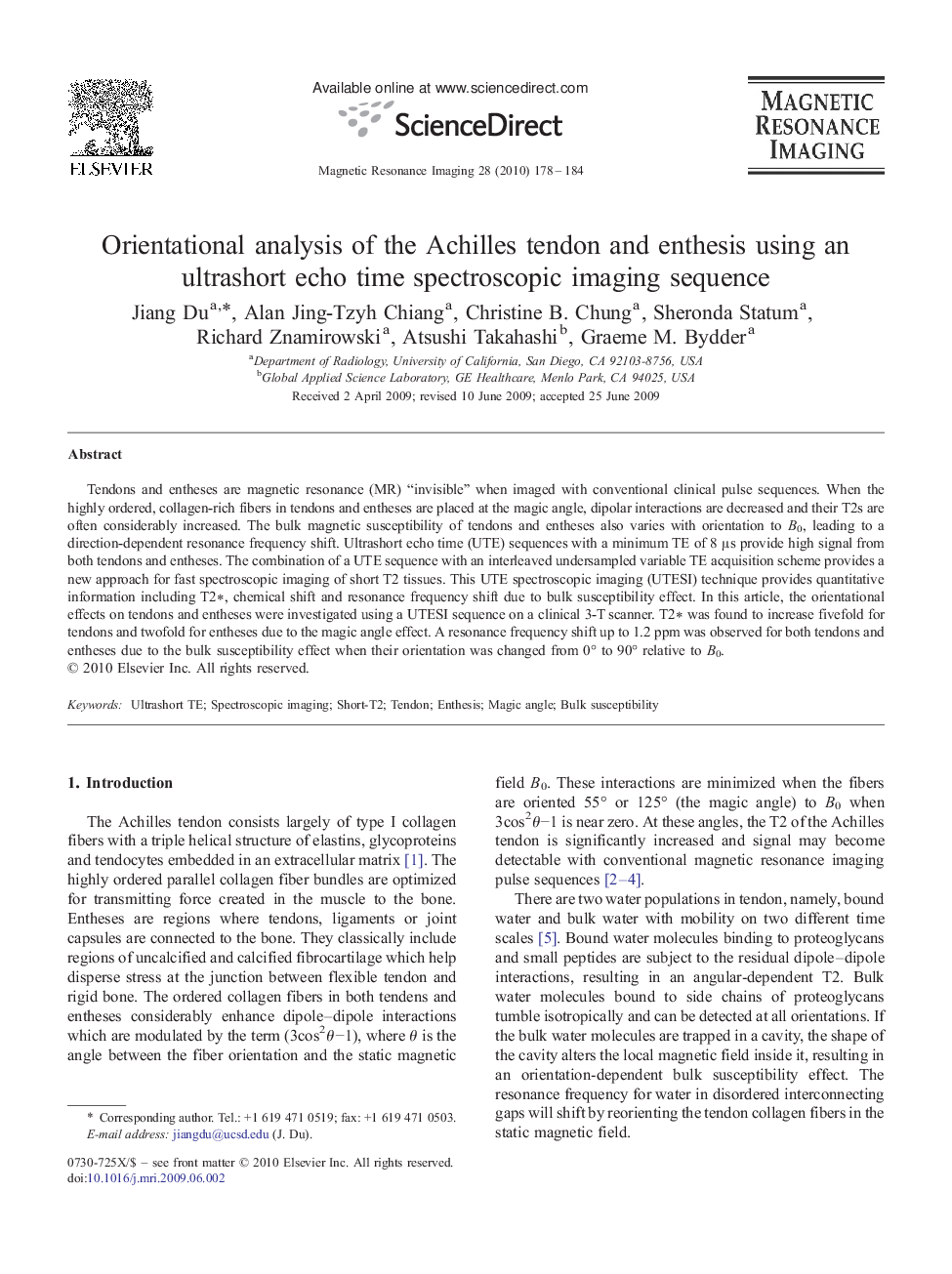| Article ID | Journal | Published Year | Pages | File Type |
|---|---|---|---|---|
| 1807059 | Magnetic Resonance Imaging | 2010 | 7 Pages |
Tendons and entheses are magnetic resonance (MR) “invisible” when imaged with conventional clinical pulse sequences. When the highly ordered, collagen-rich fibers in tendons and entheses are placed at the magic angle, dipolar interactions are decreased and their T2s are often considerably increased. The bulk magnetic susceptibility of tendons and entheses also varies with orientation to B0, leading to a direction-dependent resonance frequency shift. Ultrashort echo time (UTE) sequences with a minimum TE of 8 μs provide high signal from both tendons and entheses. The combination of a UTE sequence with an interleaved undersampled variable TE acquisition scheme provides a new approach for fast spectroscopic imaging of short T2 tissues. This UTE spectroscopic imaging (UTESI) technique provides quantitative information including T2⁎, chemical shift and resonance frequency shift due to bulk susceptibility effect. In this article, the orientational effects on tendons and entheses were investigated using a UTESI sequence on a clinical 3-T scanner. T2⁎ was found to increase fivefold for tendons and twofold for entheses due to the magic angle effect. A resonance frequency shift up to 1.2 ppm was observed for both tendons and entheses due to the bulk susceptibility effect when their orientation was changed from 0° to 90° relative to B0.
